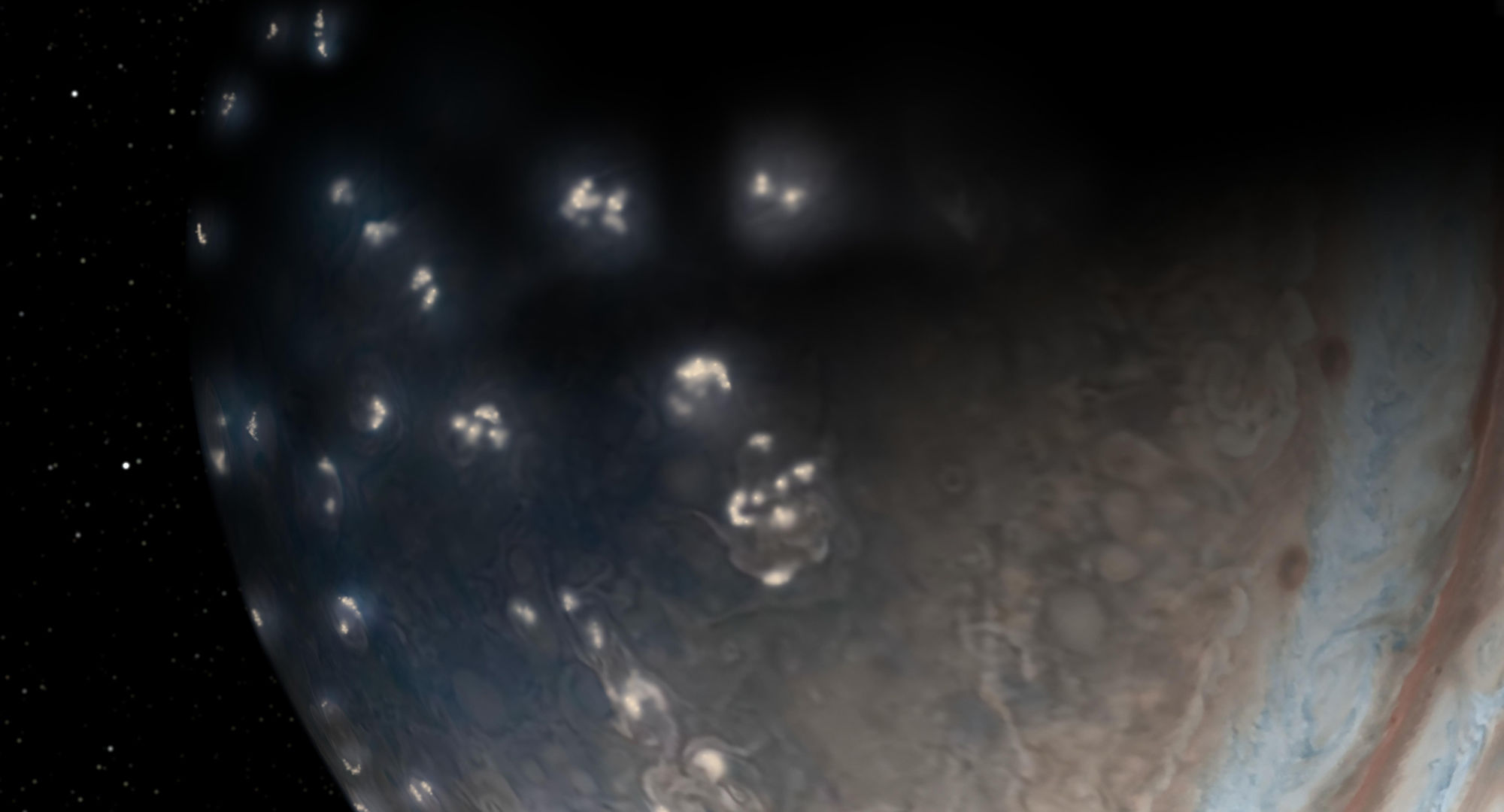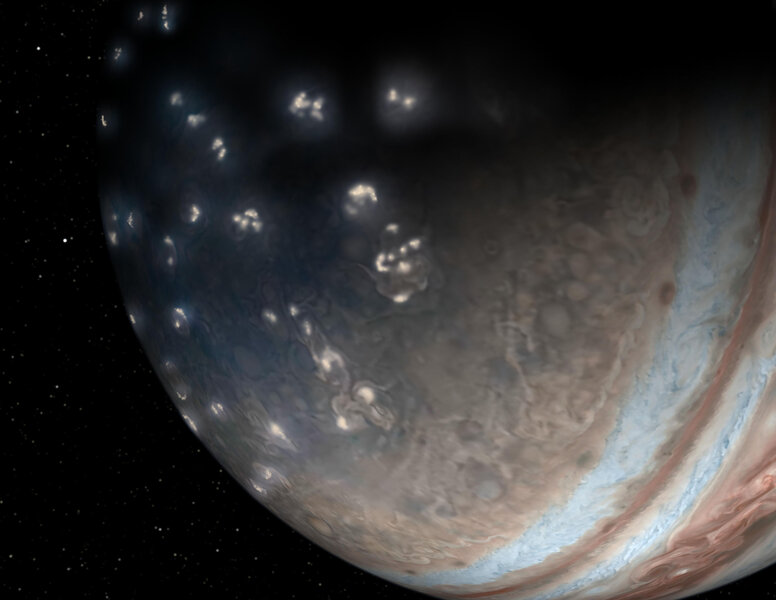Create a free profile to get unlimited access to exclusive videos, sweepstakes, and more!
Well, he *is* the god of lightning

Scientists have discovered that huge bolts of lightning crackle across Jupiter constantly, and that they're not at all where you'd expect them to be. How did they do this? By listening to them whistle electronically from thousands of kilometers away using a spacecraft screaming past at over 200,000 kilometers per hour.
Nothing about this story isn't cool.
First, yes, there's lightning on Jupiter. Every spacecraft that's visited the ginormous planet has detected it, either by seeing the flashes directly on the night side of Jupiter, or by detecting radio waves emitted by the lightning.
Lightning occurs when electrons are stripped from their home atoms and separated from them by large distances. On Earth this happens in storm clouds, with currents of warm air moving up and cooler ones moving down (this is called convection). Particles of ice and drops of water brush past each other, shearing off electrons. The electrons are swept down by the descending particles while the now positively charged molecules move up. The base of the cloud gets a big negative charge and the top gets a positive charge. When this difference in charge (called the potential, or voltage) gets big enough, the electric field generated tries to fix it. You get a huge and very fast flow of electricity to correct the imbalance.
ZZZZZAPPPBANG! Lightning.
Jupiter, too, has huge parcels of convecting gas, and the same process can occur.
Lightning generates radio waves because of a fundamental law of electricity: If you accelerate a charged particle it will emit electromagnetic waves. That's a fancy term for light. When a lightning bolt discharges, the electrons accelerate very, very rapidly, and the way the physics works out this makes radio waves. These can have a wide range of frequencies, from a few Hertz to a few billion Hertz (or gigaHertz).
The radio waves move outward, and due to some fairly complicated physics they interact with the ionosphere, the layer of charged molecules in the Earth's atmosphere that goes from about 80 to 1,000 kilometers above the surface. The higher frequencies propagate more rapidly through this layer, so when the radio waves are detected by, say, satellites, the higher frequency gets there first, followed by ever lower frequencies. If you translate that into sound (light and sound are very different, but are both waves) you get a sharp whistle that starts at a high pitch and drops. These are called "whistlers" for that reason.
Trust me: Listen to one. It's very cool. Creepy, but cool.
The Juno spacecraft has been orbiting the big planet since July 2016. It has instruments on board that can detect radio waves, and "heard" whistlers from Jupiter. Lots of them. In fact, far more than any other mission did, which answered one old question about the planet: How often lightning occurs. One prediction had it happening a lot, but detections were sparse. The Juno observations show the prediction was correct; about 1 – 30 flashes per square kilometer per year. That may not sound like much, but Jupiter has a lot of square kilometers at the top of its atmosphere (about 60 billion), so this translates to about 2,000 – 60,000 lightning flashes somewhere on Jupiter every second.
Ye. Gads.
Interestingly, that rate (not the total amount, but the 1-30 flashes per square kilometer per year) is about the same as it is on Earth. But our fair planet is a lot smaller than Jupiter, so we get fewer lightning bolts overall.
But there was another surprise waiting, too: Unlike Earth, where most lightning occurs in the tropics and close to the equator, on Jupiter the bolts tend to erupt closer to the poles. Weirdly, the reason for both planets may be the same: sunlight.
On Earth, our main source of heat is the Sun. This heats the equator more than the poles, so we get more convection there, so more storms, so more lightning.
Jupiter, though, is different. The Sun is five times farther away than it is on Earth, so it only gets 1/25th as much heat from the Sun. Most of the heat in Jupiter's atmosphere rises up from the deep interior, and that's what causes convection there.
But sunlight, while weak, still has an effect. It heats Jupiter's equator more than the poles (as it does on Earth), but that tends to dampen convection at the equator! If the rising warm air sees warm air above it, convection is suppressed (it's the difference in temperature that in part drives convection). So you get less rising air at the equator, and more at the poles, the opposite of Earth. As a result, more lightning occurs there.
Interestingly, Juno detected more lightning near the north pole than the south pole of Jupiter. That's not understood. I'll note that the storms seen by Juno at the two poles are different, too. Perhaps this is related? Hopefully Juno will help us figure that out.
I live in Colorado, and we get huge summer storms that darken the sky considerably and generate a lot of lightning. They're awe-inspiring and beautiful and terrifying. Earth and Jupiter are vastly different worlds, but they also have much in common. That'll give me something to ponder as I whistle in the dark, and the lightning whistles along with me in a way I cannot hear.















